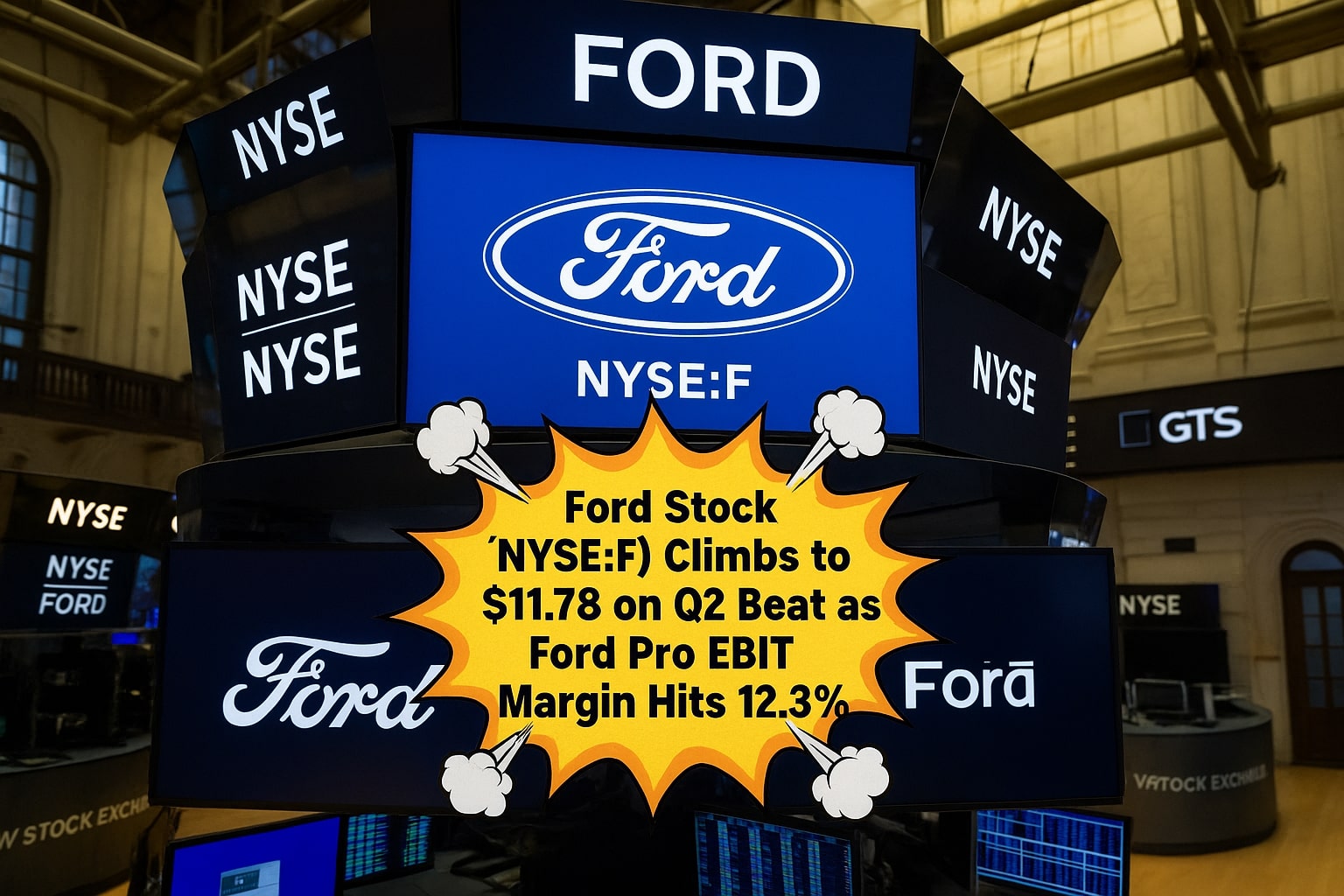Robust Second-Quarter Earnings Outpace Expectations
Ford’s second-quarter performance underscores its ability to deliver against considerable macro headwinds. The automaker reported adjusted earnings of $0.37 per share on revenues of $46.9 billion, comfortably ahead of consensus estimates by $0.04 and outstripping projected sales by $3 billion. This top-line strength reflects persistent consumer appetite for Ford’s internal combustion engine (ICE) portfolio, where F-Series pickups and Transit vans sustained full order books even as global supply chains remained strained. The reported figures also include a net $2 billion drag from U.S. tariffs on steel, aluminum and key components, yet Ford’s operating leverage in its core businesses enabled it to offset roughly half of that headwind through mix improvement and disciplined cost control.
Ford Pro’s Margin Expansion Rewrites the Profit Playbook
The Ford Pro segment again stole the spotlight, generating $18.8 billion in revenue and $2.3 billion in adjusted EBIT, lifting its margin to 12.3 percent—a 3.7-point sequential improvement. Commercial customers ordered over 13,400 Transit vans in July, up 16 percent year-over-year, and that demand for fleet vehicles translated seamlessly into recurring software and maintenance fees. Leadership has signaled a strategic reallocation of capital toward Ford Pro’s high-return opportunities, noting that the 68.7-point EBIT margin gap between this division and the Model e electric business makes such a shift irresistible. With fleet telematics and subscription services gaining traction, Ford Pro is on track to contribute more than half of the company’s consolidated operating profit by mid-2026.
Model e’s Scaling Costs and Path to Profitability
Ford’s electric vehicle arm, Model e, continues to ramp production and broaden its lineup, doubling quarterly revenue to $2.4 billion. Yet the division still recorded a $1.3 billion adjusted EBIT loss (-56.4 percent margin), widening by $500 million from Q1 as charging infrastructure investments accelerated. Early adopters embraced the F-150 Lightning and Mustang Mach-E, driving total global EV deliveries past 75,000 units year-to-date. Even as losses deepen in the near term, management maintains that Model e’s unit economics will break even in late 2026 once fixed costs are absorbed by higher volume and streamlined supply agreements.
Guidance Revision Clarifies Tariff and Cash-Flow Outlook
In a full-year update, Ford now anticipates $6.5–7.5 billion in adjusted EBIT and $0.5–1.0 billion in free cash flow for FY 2025. This guidance accounts for an expected $2 billion net tariff impact, narrowing prior ambiguity and enhancing predictability for investors. The company highlighted that its capital deployment will prioritize debt reduction and shareholder returns, alongside targeted reinvestment into Ford Pro. With this framework laid out, analysts can model profit margins against a three-point tariff sensitivity, enabling more nuanced valuation scenarios through the cycle.
Cash-Flow Generation Underpins a Generous Yield
Despite the EV losses, Ford sustains a 7 percent dividend yield, supported by healthy cash conversion metrics. Working capital remained in balance even as inventory rose modestly to capture strong retail demand, while capital expenditures were tightly managed at $3.8 billion in the quarter. Insider transaction data reveals that several senior executives and board members have modestly increased their positions in recent weeks, reflecting confidence in the cash-flow trajectory. Meanwhile, share repurchases resumed at a pace of $500 million year-to-date, signaling management’s conviction that the stock remains undervalued relative to intrinsic cash returns.
Valuation Dislocation Offers Re-Rating Potential
At roughly 7.7× the $1.41 consensus EPS for FY 2026, Ford offers a 13 percent earnings yield—an attractive contrast to peers. General Motors trades around 5.4× forward earnings, implying a steeper yield but also reflecting distinct balance-sheet risks. Should Ford’s strategic pivot successfully narrow EV losses while Ford Pro continues to drive margin expansion, a re-rating to a 10× multiple—still conservative versus the industry—would imply a fair value near $14.10 per share, representing approximately 30 percent upside from today’s $11.00 level.
Key Risks: Trade Policy and EV Investment Cadence
Ford’s momentum is exposed to potential trade-policy shifts. A resurgence of higher duties on North American inputs could reverse recent margin gains, with every 1 percent tariff uptick estimated to shave $150 million off annual EBIT. Similarly, Model e’s burn rate must decelerate by mid-2026 to avoid protracted cash-flow drag. Management has earmarked these as principal headwinds, and ongoing sensitivity analyses will be essential to gauge the balance between growth investments and capital preservation.
Strategic Inflection and Final Recommendation for NYSE:F
With a clear roadmap to reallocate resources toward high-margin fleet operations, a narrowing EV loss trajectory, and a clarified guidance envelope, Ford is entering a strategic inflection point. The yield-plus-growth combination makes NYSE:F a compelling choice for income-seeking investors willing to embrace a moderate cyclical profile. Against this backdrop, and considering the robust Q2 beat, Ford stock earns a Buy rating at current levels.



















